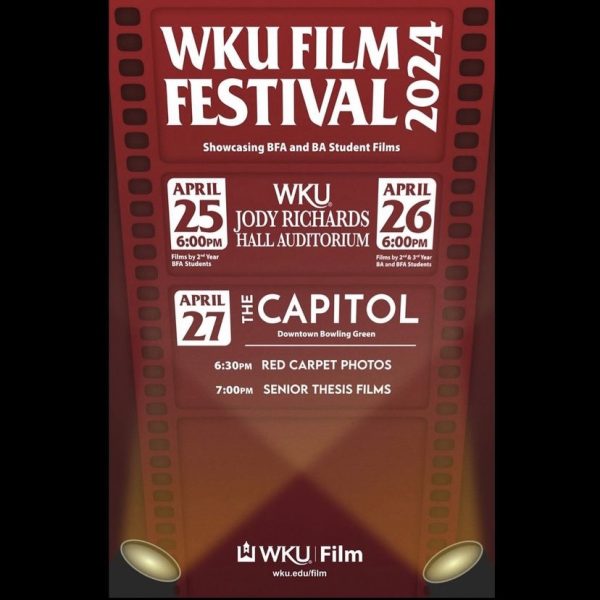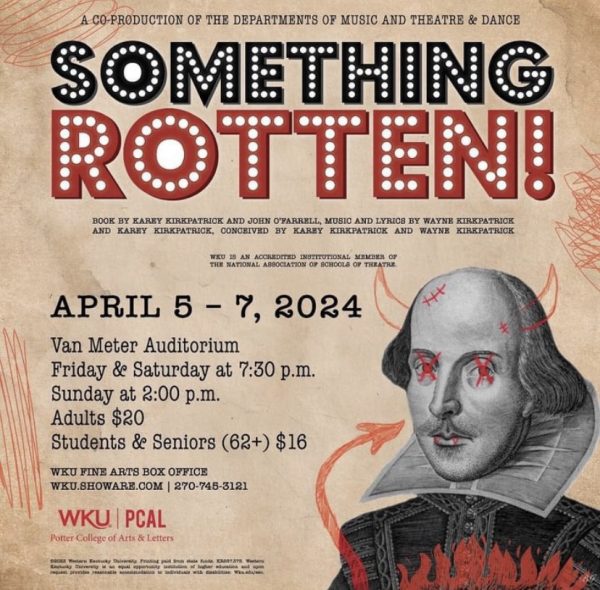The Reel: “Gatsby” a bold vision that works
May 18, 2013
Based on the 1925 classic, director Baz Luhrmann’s adaptation of F. Scott Fitzgerald’s “The Great Gatsby” follows Nick Carraway (Tobey Maguire, in one of his strongest performance to date) during one summer in Long Island, New York at the peak of the “Roaring 20s,” an era of loose morals, cheap liquor and energetic jazz. Nick spends the holiday with his cousin Daisy Buchanan (Carey Mulligan, wearing her heart on her sleeve) and husband Tom (a perfectly-cast, masculinity-oozing Joel Edgerton).
When not drinking gin with the Buchanans or rolling over couches entwined by gossamer curtains, Nick lounges in a small cottage directly next door to the castle-like home of Jay Gatsby (an excellent Leonardo DiCaprio), a mysterious man who always seems to be throwing lavish parties. As the two become friends, Nick is drawn further into the world of the super-rich and learns the truth behind his neighbor’s mysterious life.
When I first read the book, it instantly became one of my all-time favorites. To this day, “Gatsby” remains just as intriguing as it was to me in sophomore English class for its vivid depictions of lost love and the hope for second chances. The story soars even higher with its colorful cast of characters and flashy setting. Only Baz Luhrmann, the mind behind such unconventional cinema as “Moulin Rouge!” could do justice to a story punctuated by as much pomp and circumstance as “The Great Gatsby.”
Luhrmann’s use of saturated color tones, polished production design, visual effects, and contemporary music are all trademarks of his style, but they are also what set his “Gatsby” apart from previous cinematic adaptations. Jack Clayton’s 1974 film starring Robert Redford and Mia Farrow use unsaturated color where Luhrmann uses darker, more intense tones.
Clayton’s use of practical effects serve well to capture some of that “Roaring 20s” spirit, but it’s Luhrmann’s flash that truly captures the flair of the period. The production design and visual effects of Luhrmann’s “Gatsby” are nothing short of dazzling. His Long Island looks like the perfect place to spend the summer; complete with golf, swimming pools, beaches, and beautiful women. Gatsby’s glitter-filled, liquor-fueled parties are certainly over-the-top, but the vision itself doesn’t seem out of place to contemporary audiences.
And those glitter-filled, liquor-fueled parties wouldn’t be complete without an appropriate soundtrack. Currently ranked number 1 on iTunes and in Billboard’s categories for top alternative, rock, and soundtrack albums, “The Great Gatsby: Music From Baz Luhrmann’s Film” features tracks that would normally seem out of place for a 1920’s setting, like Jay-Z’s “100$ Bill” and Florence + the Machine’s “Over the Love”.
The slower tracks blend into their respective scenes and match the narrative perfectly. I never felt pulled out of the story when I heard Fergie or Lana Del Rey, which is something that surprised me when I finally saw the movie.
The script, from Luhrmann and Craig Pearce (“Moulin Rouge!”), sticks closely to the book’s text, while taking a few creative liberties. For instance, Nick spends the film in a sanitarium narrating the events of the film as he therapeutically writes them down. This difference didn’t bother me. By the end of the movie, Nick still works as a stand-in for Fitzgerald himself.
Along with a strong script and production design, Leonardo DiCaprio is marvelous as Gatsby. I’m not sure there’s another actor working in Hollywood today that could do justice to the character. He’s a millionaire who has everything and nothing at the same time. His Gatsby is wholly sympathetic. You want him to be with the woman he loves — despite her being married to another man. The only aspect of the character that feels slightly milked is the overuse of his classic pet phrase “old sport”.
I went into Luhrmann’s “The Great Gatsby” with lowered expectations after the earliest reviews came out mixed. While some may find fault with the use of the contemporary music for the scoring, flashy visual effects, and creative liberties with the screenplay, I consider myself a fan of the book who’s satisfied with Luhrmann’s adaptation. He achieves a rare balance between source-material loyalty and sheer cinematic entertainment thanks to some bold set pieces, a talented cast that never feels out of place, and a script that sticks close to the text of the book.
Surely, Mr. Fitzgerald would be pleased, old sport.

















![Megan Inman of Tennessee cries after embracing Drag performer and transgender advocate Jasmine St. James at the 9th Annual WKU Housing and Residence Life Drag Show at Knicely Conference Center on April 4, 2024. “[The community] was so warm and welcoming when I came out, if it wasn’t for the queens I wouldn’t be here,” Inman said.](https://wkuherald.com/wp-content/uploads/2024/04/smith_von_drag_3-600x419.jpg)







